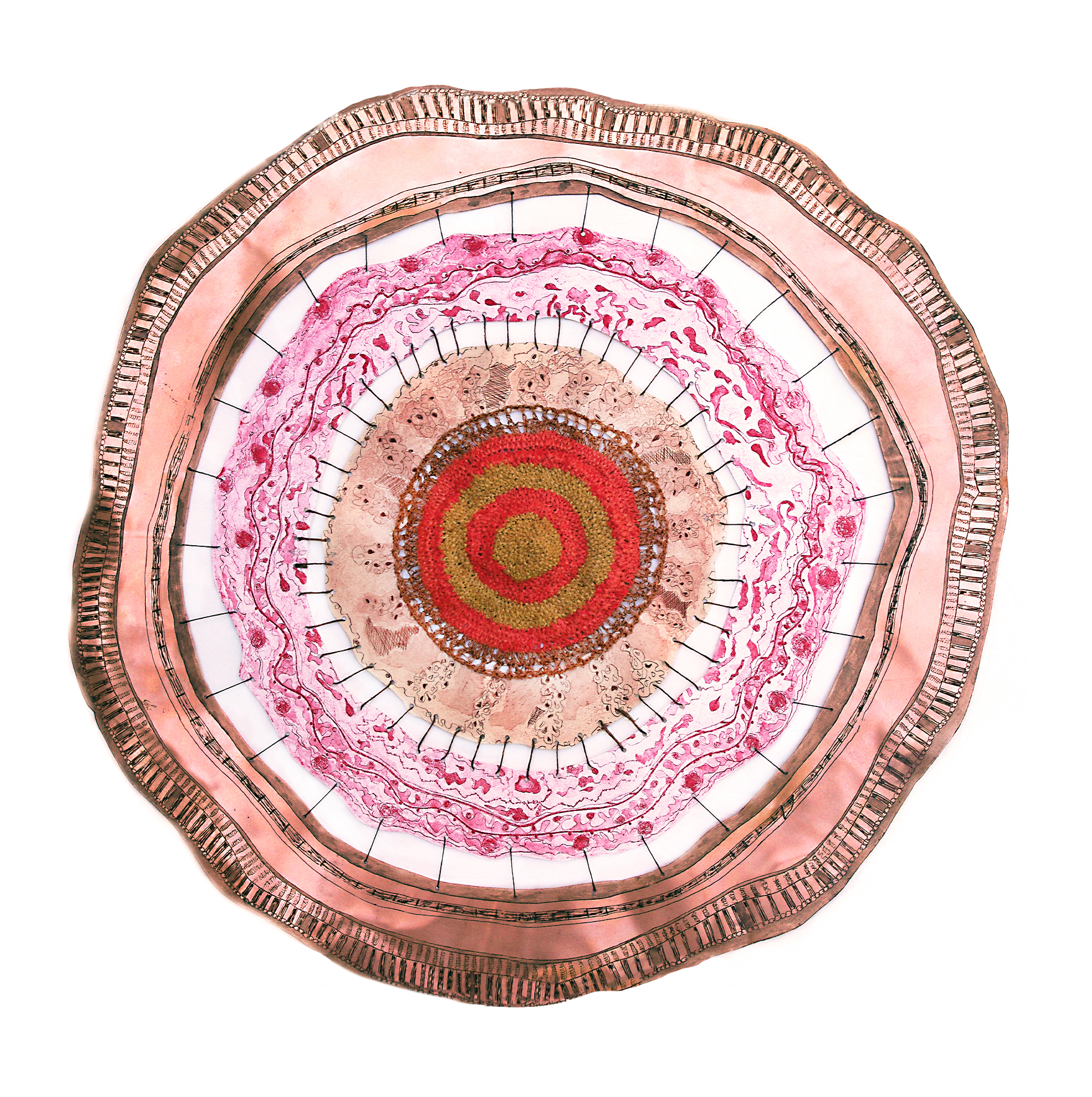
3 minute read
Sandra C. Fernández
Trained as a printmaker and photographer, Sandra C. Fernández works in sculpture, installation, painting, and the creation of artist’s books to convey her interest in identity and politics and to advocate for coexistence, rehabilitation, and social justice.
In the Nucleus-ities series, Fernández combines her sewing practice and printmaking techniques to reflect unity and solidarity through the stitching of seemingly incompatible elements. In Matrix C, the stitching unites the diverse elements of the artwork–copper, wire, crochet, and paper–to create a unified composition. At the same time, the stitching occasionally goes beyond boundaries, as seen in Dream, to express freedom and non-conformity.
This freedom is further reflected in the made-up word, Nucleusities. The title of this series reveals Fernández’s interest in openness and women’s autonomy. Symbolic also of healing, the stitching in the Nucleus-ities series speaks of the end and beginning of relationships in a woman’s life and the liberation and cure that comes with these processes. As the artist explains, “stitching for me has been a sort of, talking about healing and empowerment, when you sew something together, you mend, you put things back together, you make something new out of them. There is still a fracture in there, but when you are sewing things together, you are creating something, you are giving a new life to something that was broken.”
Entrenada como grabadora y fotógrafa, Sandra C. Fernández trabaja con escultura, instalación, pintura y la creación de libros de artista para transmitir su interés por la identidad y la política y abogar por la coexistencia, rehabilitación y justicia social.
En la serie Nucleus-ities, Fernández combina su práctica de costura y técnicas de grabado para reflejar unidad y solidaridad a través de la costura de elementos aparentemente incompatibles. En Matriz C, la costura une los elementos diferentes de la obra (cobre, alambre, croché y papel) para crear una composición unificada. Al mismo tiempo, la costura ocasionalmente va más allá de los límites, como puede verse en Sueño, para expresar libertad y no conformidad.
Esta libertad se refleja todavía más en la palabra inventada Nucleus-ities. El título de esta serie revela el interés de Fernández en la apertura y autonomía de las mujeres. También como símbolo de sanación, la costura en la serie Nucleus-ities habla sobre el fin y el comienzo de las relaciones en la vida de una mujer y la liberación y curación que vienen con estos procesos. Con palabras de Fernández, “la costura para mí ha sido como hablar sobre la sanación y el empoderamiento; cuando coses algo junto, tú remiendas, vuelves a juntar las cosas, haces algo nuevo de estas. Todavía hay una fractura allí, pero cuando coses las cosas juntas, estás creando algo, estás dando una vida nueva a algo que estaba roto.”

Nucleus-ities Matrix C | Nucleus-ities: Matriz C, 2011

Nucleus-ities: Matrix D | Nucleus-ities: Matriz D, 2011
Sandra C. Fernández (b. 1964, New York City)

Nucleus-ities Series/Dream | Serie Nucleus-ities/Sueño, 2011
Sandra C. Fernández (b. 1964, New York City)

Nucleus-ities IV (bubblies), 2011
Sandra C. Fernández (b. 1964, New York City)







